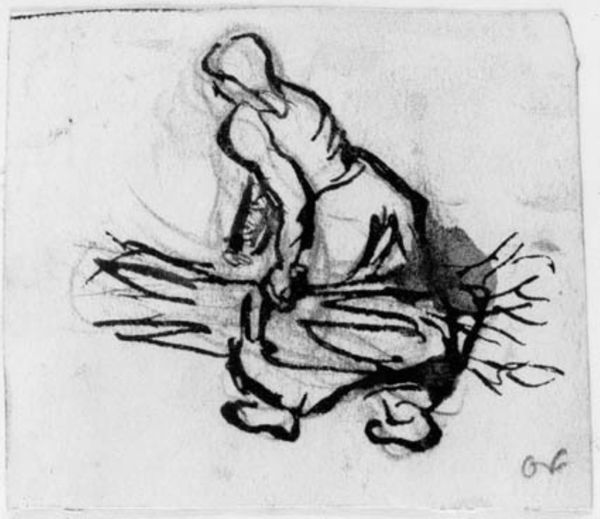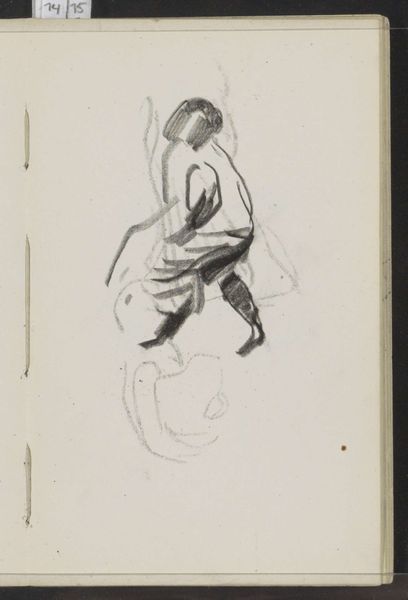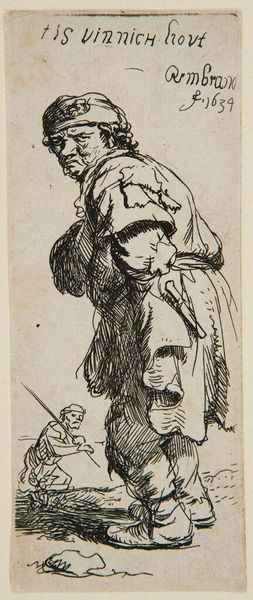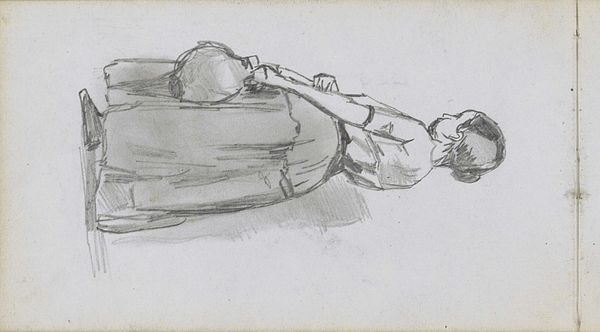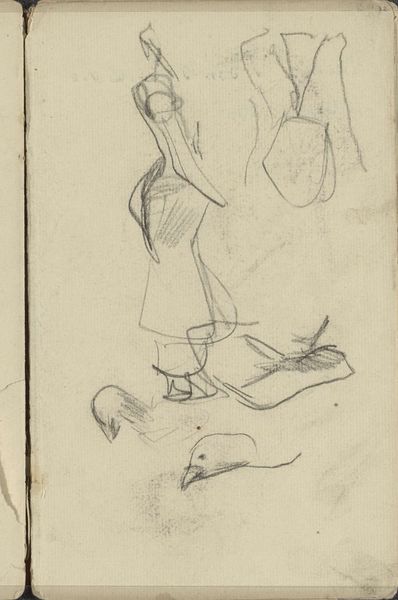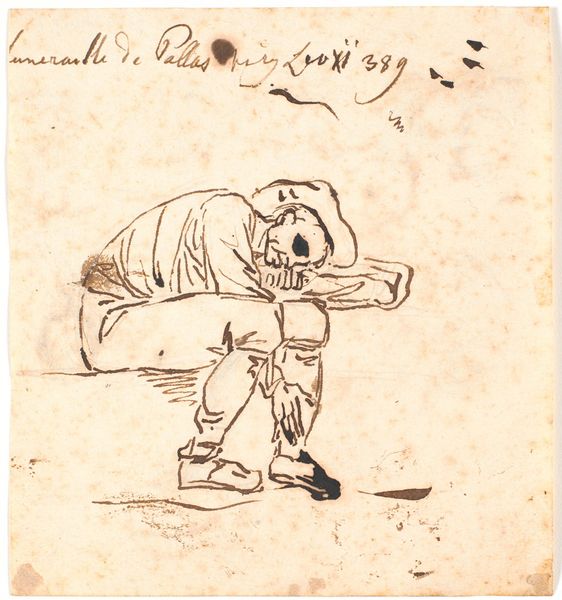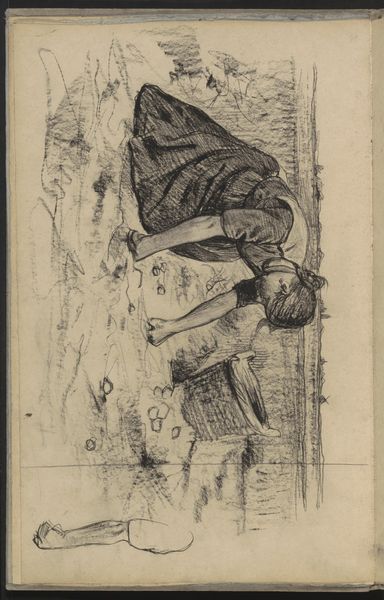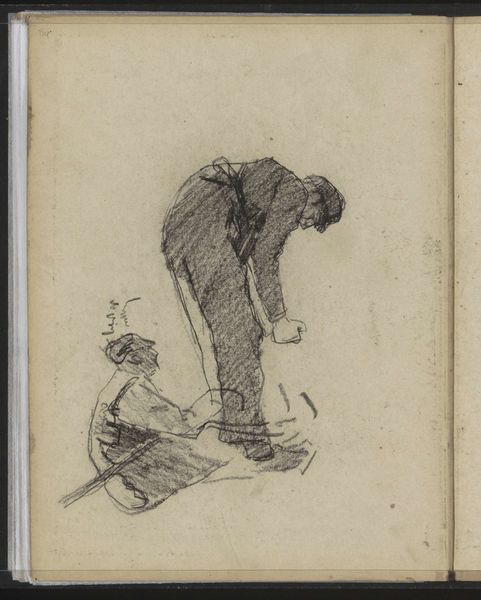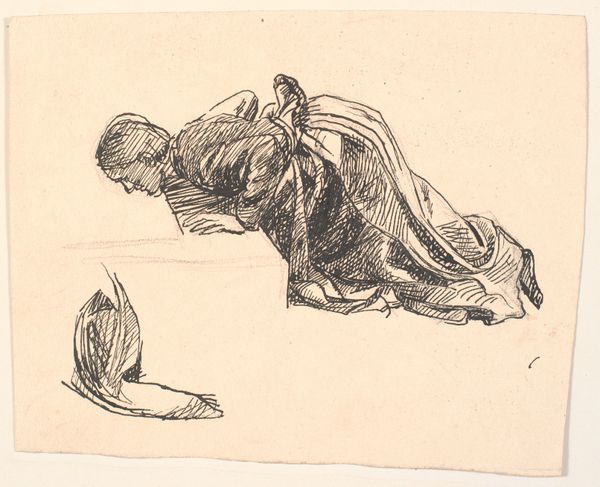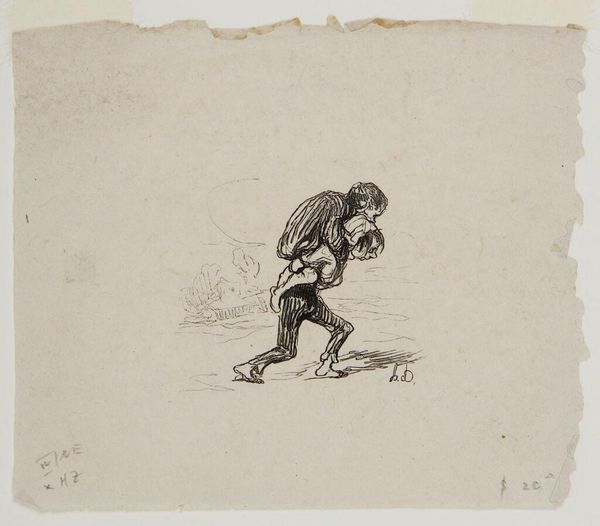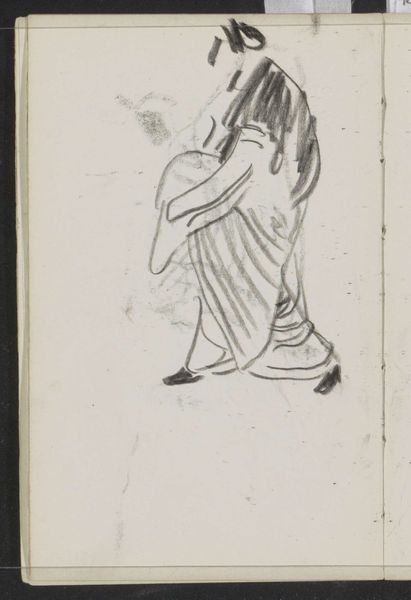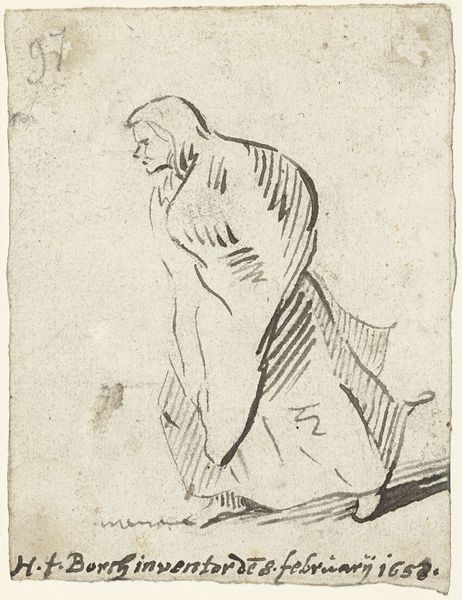
Dimensions: 102 mm (height) x 103 mm (width) (bladmaal)
Curator: This drawing is titled "Studie af kone der sanker korn," which translates to "Study of a woman gleaning grain." It was created in 1907 by Othon Friesz and resides here at the SMK. What are your initial thoughts? Editor: The frenetic, almost violent lines convey a profound sense of weariness. She's bent so low, burdened not just by the task but perhaps by the weight of societal expectations. Curator: Gleaning, of course, was the act of gathering leftover crops after a harvest, a practice deeply rooted in agrarian societies. This image offers a stark commentary on class and survival. Consider the back-breaking labor required, mostly done by women, often the most vulnerable in the community. Editor: Precisely! There’s an inherent precarity depicted here. What legal protections, what societal safety nets were available to women in Friesz's time performing such labor? Her anonymity is also telling; she's not an individual, but rather a representation of an entire socio-economic group. Curator: And it's critical to place Friesz himself within this context. While associated with Fauvism later in his career, here we see impressionistic sensibilities shining through—though tempered by a certain social realism. The drawing itself, being a study, likely served as groundwork for a more elaborate painting, reflecting an academic tradition that intersected with increasingly radical social and artistic movements. Editor: I wonder if he consciously wrestled with the ethics of representing such vulnerable labor? Did he view her as merely an aesthetic subject, or did he engage with the broader political dimensions of her existence? The lack of individual detail allows for broader symbolic interpretations about working women in his milieu. Curator: That ambiguity is a crucial tension. Friesz, part of the Parisian avant-garde, simultaneously partook in and observed societal realities. Perhaps he wanted to evoke a certain empathy and understanding, without delving into detailed social commentary? His portrayal treads a fine line, which makes it thought-provoking. Editor: For me, this work really highlights the ongoing need to examine how we represent labor, and the responsibilities artists shoulder in visually articulating these often-unseen struggles. Curator: It really brings forth many historical and social questions that linger even today.
Comments
No comments
Be the first to comment and join the conversation on the ultimate creative platform.
